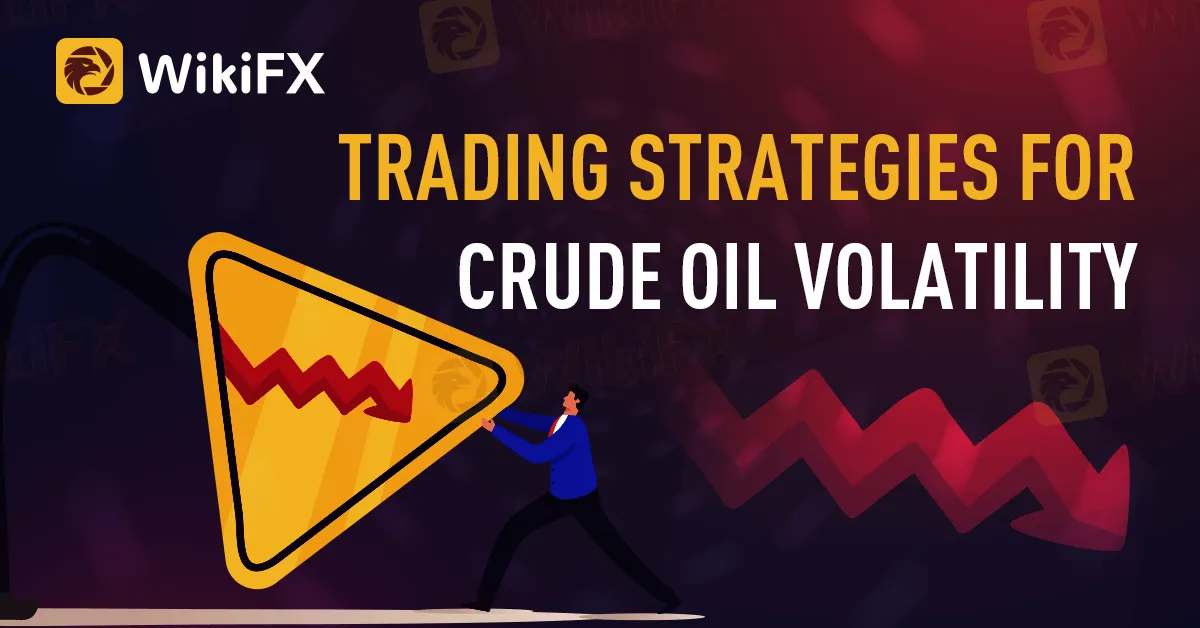简体中文
繁體中文
English
Pусский
日本語
ภาษาไทย
Tiếng Việt
Bahasa Indonesia
Español
हिन्दी
Filippiiniläinen
Français
Deutsch
Português
Türkçe
한국어
العربية
TRADING STRATEGIES FOR CRUDE OIL VOLATILITY
Abstract:Because of its unique interaction with the world's political and socioeconomic institutions, crude oil offers tremendous liquidity and huge profit opportunities in most market scenarios. Furthermore, the energy sector's volatility has increased quickly in recent years, resulting in strong patterns of consistent returns for long-term "market timing" methods and short-term "swing trades."

Because of its unique interaction with the world's political and socioeconomic institutions, crude oil offers tremendous liquidity and huge profit opportunities in most market scenarios. Furthermore, the energy sector's volatility has increased quickly in recent years, resulting in strong patterns of consistent returns for long-term “market timing” methods and short-term “swing trades.”
Traders sometimes fail to profit from variations in crude oil prices because they are uninformed of the market's unique features or because they are unaware of the market's hidden hazards, resulting in a loss.
Whether you are a seasoned or inexperienced trader, this article can help you earn some money by trading crude oil.
Because of the current volatility in oil prices, a trader who can forecast the proper direction of the price has a good possibility of profiting.
If oil is now priced at US$85 and the call and put option strike prices are $8 combined, the strategy is profitable if the oil price moves $8. So, whether the oil price rises over $93 or falls below $77, the strategy will benefit.
The term “short straddle” refers to the technique of selling volatility or profiting from a decrease in volatility (or steady volatility). It consists of selling both a put and a call option at the same price. When the price moves inside a narrow range over an extended length of time, a “short straddle” becomes beneficial.
If oil is now priced at US$85 and the call and put option strike prices are $8, then the strategy will benefit if the price of oil moves by no more than $8. As a result, if the price of oil increases to $93 or falls to $77, this approach will be lucrative.
These tactics may work in both ways, so if a trader is interested in oil prices, they can use spreads to benefit while limiting their risks.
A “bear call spread” is a well-known bearish technique that involves selling one OTM option and purchasing another OTM call. The greatest profit for this strategy is the net credit amount, and the maximum loss is the difference between the net credit amount and the strike prices.
The “bull call spread” is a parallel bullish strategy that consists of purchasing one OTM call and selling another OTM call. The greatest loss for this strategy is the net debit amount, and the maximum profit is the difference between the net debit amount and the strike prices.
As a result, traders may possibly profit from fluctuating oil prices, similar to stock prices, by employing these derivative methods.
With knowledge of crude oil trading tactics, you may establish a STO account with access to MT4, one of the industry's premier FX trading platforms, and begin trading right away. For further information, please see the link above.
This post represents the STO Investment Research Desk's personal viewpoint and opinion and should not be considered as investment advice. FX and CFD trading are high-risk investments that may not be suited for everyone; be sure you fully understand the dangers. You might lose part or all of your invested funds.

Disclaimer:
The views in this article only represent the author's personal views, and do not constitute investment advice on this platform. This platform does not guarantee the accuracy, completeness and timeliness of the information in the article, and will not be liable for any loss caused by the use of or reliance on the information in the article.
Read more

Why Do You Feel Scared During Trade Execution?
Trade execution is a pivotal moment for traders. It is when analysis turns into action, and potential profits or losses become reality. However, for many traders, this moment is accompanied by fear. Why does this happen, and how can you address it?

Pros and Cons of Choosing Unregulated Forex Brokers
Discover the pros and cons of unregulated forex brokers, explore risks, benefits, and key features, and learn how to evaluate their credibility with the WikiFX app.

5 Questions to Ask Yourself Before Taking a Trade
Before executing any trade, traders should pause and ask themselves critical questions to ensure they are making rational and well-informed decisions. Here are five questions to help you reflect on your strategy, manage risk, and control emotions before entering the market.

The Psychology of Investment Scams: Understanding Why Victims Fall Prey
Investment scams have become increasingly sophisticated, preying on human psychology to exploit vulnerabilities. While these fraudulent schemes promise extraordinary returns, they often rely on psychological tactics to deceive victims. Understanding these factors can help traders recognise and avoid falling for scams.
WikiFX Broker
Latest News
Geopolitical Events: What They Are & Their Impact?
Top 10 Trading Indicators Every Forex Trader Should Know
Why Do You Feel Scared During Trade Execution?
Currency Calculator


